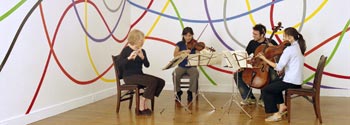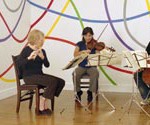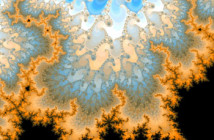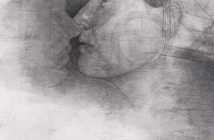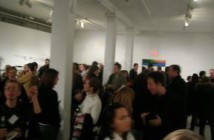Once upon a time, there lived a young woman who dreamed of a beautiful place where the intoxicating passions of the Muse could thrive. During the course of her historic odyssey, she became an ardent community supporter, friend and patron to artists, writers, and musicians, and the forward thinking creator of one of the most remarkable and intimate collections of art in the world. The Isabella Stewart Gardner Museum opened its doors to the public on the evening of January 1, 1903. More than a century later, as we struggle for oxygen under the often suffocating weight of our self-induced trauma, the fruits of her contagious vision continue to dazzle with gems of wit, warmth, and elegance.
A couple of weeks ago, on a chilly gray day, I paid a visit to Isabella’s faux 15th century Venetian palazzo. I was ushered past the lush, light bathed courtyard to the site of a Sol LeWitt wall drawing, at once luminous, restrained, and mischievously simple. The Special Exhibitions Gallery is ground zero for Variations on a Theme, a collaborative project between two renowned artists, flutist Paula Robison and conceptual art pioneer, Sol LeWitt. Members of the staff were busy assembling thirty five collapsible canvas stools for today’s performance, rehearsing a ritual that has taken place at a random time every day since the opening of the event. Variations is a remarkable project, very much in keeping with the Gardner legacy. It is firmly grounded in friendship, mutual respect, and trust. Initial seeds of its growth were nurtured by Pieranna Cavalchini, the Gardner’s Curator of Contemporary Art. Deep tap roots reach back to the early 1980’s, in Spoleto, Italy, where artist, musician, and curator drew inspiration from the music of Mozart and the enduring spirit fostered by thoughtful artistic collaboration.
Today’s blue ribbon special was Mozart’s flute Quartet in D major. Every seat in the gallery was occupied. Clusters of more ears and eyes pressed in from the hallway. Promptly at noon, Paula Robison, the Gardner’s 50th Artist-in-Residence, and three young musicians joined our gathering. Paula greeted us warmly and introduced her colleagues. Then, with a deep breath and a nod, the drama of the flute’s impassioned courtship with the strings began to artfully unfold, plucking at the sinews of our collective heartstrings. LeWitt’s vigorous wall drawing brilliantly set the stage. Together, he and a team of artists had prepared a robust accompaniment for the mind’s eye. In the late summer, the walls of the gallery had been meticulously sanded, primed, and painted a clean white by Takeshi Arita, a trained “drawer” who travels around the world on commission for LeWitt, and two freshly recruited Boston artists April Gymiski and Reese Inman. Over the ensuing three week period, they enacted LeWitt’s graphic score. An elastic undulating merry-go-round-like network composed of eight 2” wide lines was projected, drawn, taped, adjusted, and fleshed out with successive coats of acrylic paint. Six saturated spectral hues– red, orange, yellow, green, blue, violet - plus a mid tone gray and its rich ebony companion endlessly engage each other in a playful game of tag, racing up, over, in, out, and around the open planes of the gallery walls.
Since the first prototype in the late 1960’s, more than nine hundred LeWitt wall drawings have been on view in locations ranging from major museums and galleries to private homes and public spaces. The collaborative and participatory nature of his practice, more akin to architecture than to visual art, enforces new methods of artistic production. Based on a set of instructions conceived by the artist, each drawing is a potential experience awaiting the ritual of enactment. Arbitrary separation of the act of ‘drawing’ from direct contact with the artist’s own hand begs comparison to its musical counterpoint. Differences inevitably arise in the formal translation process, particularly in light of the flexibility exercised in the relationship between composer, musician, and embodied listener, but these two models claim common ground through their embrace of the originating idea: a concept, not an object. Robison notes that LeWitt “combines freedom, motion, and repose, elegance and mischief with the same sure hand that guided Mozart and he achieves the same luminous balance.”
Variations on a Theme emphasizes connections to music, art, and community, and breathes new life into the classical model of artistic collaboration. Its creative partners cast an unapologetic backward glance while polishing the dazzling gems of beauty, friendship, and sensual pleasure. Reading deeper between the lines at this cultural moment, we can discern the unmistakable presence of a strange familiar ghost - the ancient Muse of the Arts, patron saint to Mozart , Robison, and LeWitt - live and well, after all - in our cyber age of technological miracles. The curtain closes, but the applause lingers on as we recognize that we have just received a healthy dose of a vital and necessary tonic.
Links:
Isabella Stewart Gardner Museum
"Variations On a Theme" was on view from September 23–November 13, 2005 at The Isabella Stewart Gardner Museum
All images are courtesy of the artists and The Isabella Stewart Gardner Museum.

